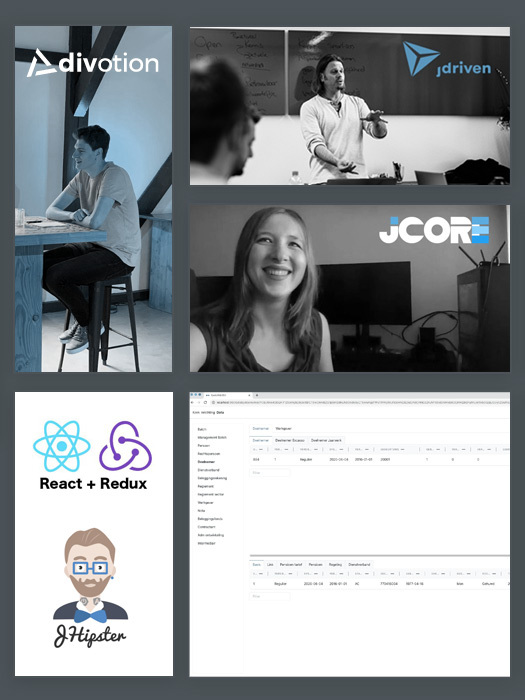Summarizing the WCAG 2.2 Draft
In this article, I will summarize the WCAG 2.2 draft. This new version of the Web Content Accessibility Guidelines is expected to be published at the start of 2023. It’s already been 4 and a half years since WCAG 2.1 was published in June 2018. The web has changed in that time and so will the guidelines.
I’m going to explain the current status of the draft and discuss changes to the existing success criteria and finally cover all additional success criteria. I will also be linking to relevant sources you can use if you want to dive into more detail.
Draft Status
I’ll quickly explain the status of the 2.2 draft at the moment I’m writing this (on the 21st of December 2022). There is a snapshot version and an editor’s draft.
The “Candidate Recommendation Snapshot” version was approved in September 2022 and even though it’s considered stable, it might be changed based on implementation experience. The editor’s draft has recently proposed changes that have not yet been approved. Since there is a stable snapshot version we are ensured of an implementation.
If you’re interested in the editor's draft, you can read it here https://w3c.github.io/wcag/guidelines/22/. If you’re interested in the Candidate Recommendation Snapshot of September 2022, you can read it here https://www.w3.org/TR/2022/CR-WCAG22-20220906/.
Guideline Changes
When WCAG 2.1 was created it copied over all WCAG 2.0 success criteria (meaning that if you comply with 2.1, you’ll also comply with 2.0). The same is the case with 2.2. So if you comply with 2.2 then you’ll comply with 2.1 and 2.0.
However, there has been one change in the existing success criteria. The 2.4.7 Focus Visible success criteria changed the conformance level from AA to A in 2.2. This means that a visible focus indicator now only indicates the lowest level of conformance and is not considered to indicate a mid-range level of accessibility anymore.
If you want to read more about how the WCAG conformance levels work I suggest you read about it here https://www.w3.org/WAI/WCAG21/Understanding/conformance#levels.
Guideline Additions
WCAG 2.2 also adds 9 additional success criteria spread out over the Navigable, Input Modalities, Predictable, and Input Assistance guidelines. In this part, I’ll explain these criteria and what they mean for WCAG conformance.
Navigable (2.4)
“Provide ways to help users navigate, find content, and determine where they are.”
2.4.11 Focus Appearance (AA)
Important: The 2.4.11 Focus Appearance (AA) success criterion is in the September 2022 snapshot, but it’s “at risk”. This means it might not be included in the final publication.
A visible focus indicator is either:
- Entirely:
- Enclosing the UI component that’s focused
- and, has a contrast ratio of at least 3:1 between the same pixels in the focused and unfocused states
- and, has a contrast ratio of at least 3:1 against adjacent non-focus indicator colors.
- or, Partially:
- At least as large as a 1 CSS pixel thick perimeter around the unfocused component / or at least as large as a 4 CSS pixel thick line along the shortest side of the minimum bounding box of the unfocused component
- and, has a contrast ratio of at least 3:1 between the same pixels in the focused and unfocused states
- and, has a contrast ratio of at least 3:1 against adjacent non-focus indicator colors / or is at least 2 CSS pixels.
Exceptions:
- The focus indicator is determined by the user agent and cannot be adjusted by the author
- or, the focus indicator and the indicator's background color are not modified by the author.
2.4.12 & 2.4.13 Focus Not Obscured
In WCAG 2.2 we’ll get two additional success criteria levels for Focus Not Obscured:
- AA, When a user interface component receives keyboard focus, the component is not entirely hidden due to author-created content.
- AAA, When a user interface component receives keyboard focus, no part of the focus indicator is hidden by author-created content.
Input Modalities (2.5)
“Make it easier for users to operate functionality through various inputs beyond keyboard.”
2.5.7 Dragging Movements (AA)
To conform to this criterion ensure functionality that uses a dragging movement has an alternative single pointer mode of operation without the need for the dexterity required to drag elements.
2.5.8 Target Size (Minimum) (AA)
There was already AAA level criterion for target size (2.5.5). To conform to this new AA level criterion ensure targets can be easily activated without accidentally activating adjacent elements. Do this by using a minimum target size of at least 24x24 CSS pixels.
Exceptions:
- If there is sufficient spacing, being at least 24 CSS pixels of offset between targets.
- Does not apply to inline targets in blocks of text.
- If the spacing of the targets is essential to the information being conveyed. Like analogous positioning in digital maps.
- Target size for user agent controls (like input type = “date”) is excepted. If the target has an alternative control that can achieve the underlying function that meets the minimum area.
Predictable (3.2)
“Make Web pages appear and operate in predictable ways.”
3.2.6 Consistent Help (A)
To conform to this newest predictability criterion you need to position help mechanism in a consistent location across pages. This makes it easier for users to find them.
With help mechanisms they mean either:
- Human contact details
- Human contact mechanism
- Self-help option
- A fully automated contact mechanism
Examples:
- Always having a link to FAQ in the header.
- On each page where contact information is relevant, show it below the main content of the page.
Input Assistance (3.3)
“Help users avoid and correct mistakes.”
3.3.7 Accessible Authentication (AA)
We now have 2 conformance levels for authentication. The AA level criterion makes you avoid adding a cognitive function test to any step in an authentication process.
Exceptions:
- There is an alternative in place that doesn’t rely of a cognitive function test.
- There is an assistive mechanism available that helps with completing the cognitive function test.
- The cognitive function test is in the form of an object recognition test.
- The cognitive function test is to identify non-text content the user provided to the website. (like images, video or audio)
3.3.8 Accessible Authentication (No Exception) (AAA)
For AAA level conformance you can not use cognitive function tests in any authentication steps unless:
- There is an alternative in place that doesn’t rely of a cognitive function test.
- There is an assistive mechanism available that helps with completing the cognitive function test.
3.3.9 Redundant Entry (A)
Previously entered information that needs to be entered again is either:
- Automatically populated
- or, available for the user to select
Exceptions:
- When re-entering is essential (like re-entering your new password).
- The information si required to ensure the security of the content.
- Previously entered information is no longer valid.
This criterion ensures users can successfully navigate multi-step processes even if they have cognitive or memory difficulties. Next to that, it’s convenient for everyone filling in information not to have redundantly enter information.
Sources
- World Wide Web Consortium (W3C), ”New In 2.2” https://www.w3.org/WAI/standards-guidelines/wcag/new-in-22
- World Wide Web Consortium (W3C), “New In 2.1”, https://www.w3.org/WAI/standards-guidelines/wcag/new-in-21/
- World Wide Web Consortium (W3C), “WCAG 2.2 Editor’s Draft”, https://w3c.github.io/wcag/guidelines/22/
- World Wide Web Consortium (W3C), “WCAG 2.2 Candidate Recommendation Snapshot 06 September 2022”, https://www.w3.org/TR/2022/CR-WCAG22-20220906/
- World Wide Web Consortium, “Understanding Conformance”, https://www.w3.org/WAI/WCAG21/Understanding/conformance#levels



 Frameworks at Crossroads Europalaan 93, 3526 KP Utrecht
Frameworks at Crossroads Europalaan 93, 3526 KP Utrecht